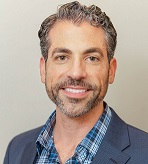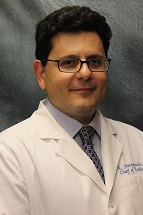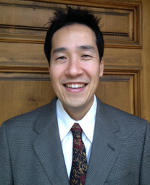Nine gastroenterologists discuss what they think are the most exciting advancements in the gastroenterology field.
Ask Gastroenterologists is a weekly series of questions posed to gastroenterologists and colorectal surgeons around the country on business and clinical issues affecting the field of gastroenterology. We invite all GI physicians to submit responses. Next week's question: How are you using benchmarking to improve colonoscopy quality?
Please submit responses to Carrie Pallardy at cpallardy@beckershealthcare.com by Thursday, March 27, at 5 p.m. CST.
 Brett Bernstein, MD, Director of East Side Endoscopy, Manhattan, N.Y.: Some of the most exciting advances have been occurring in the area of endoscopic imaging. NBI (narrow band imaging) and confocal laser endomicrosocpy are just two examples of technology that allow the gastroenterologist to identify pathologic conditions at the time of examination to guide treatment decisions often without the need of a pathologist. Other advances in imaging such as the Fuse system hold the promise of improving adenoma detection rates by dramatically increasing the field of view.
Brett Bernstein, MD, Director of East Side Endoscopy, Manhattan, N.Y.: Some of the most exciting advances have been occurring in the area of endoscopic imaging. NBI (narrow band imaging) and confocal laser endomicrosocpy are just two examples of technology that allow the gastroenterologist to identify pathologic conditions at the time of examination to guide treatment decisions often without the need of a pathologist. Other advances in imaging such as the Fuse system hold the promise of improving adenoma detection rates by dramatically increasing the field of view.
William Katkov, MD, Providence Saint John's Health Center, Santa Monica, Calif.: One of the most exciting developments in gastroenterology is in the field of hepatology. Chronic hepatitis C virus infection affects millions of people in the United States and around the world. Anti-viral therapy of chronic hepatitis C has been interferon-based since it was first studied in the 1980s. While efficacy has improved with the introduction of additional medications, the treatments are prolonged and associated with a number of serious side effects. New agents being introduced in 2014 hold the promise of oral, interferon-free treatment regimens with therapeutic success rates of over 90 percent.
hepatology. Chronic hepatitis C virus infection affects millions of people in the United States and around the world. Anti-viral therapy of chronic hepatitis C has been interferon-based since it was first studied in the 1980s. While efficacy has improved with the introduction of additional medications, the treatments are prolonged and associated with a number of serious side effects. New agents being introduced in 2014 hold the promise of oral, interferon-free treatment regimens with therapeutic success rates of over 90 percent.
There is an explosion of interest and research in the crucial role played by gut bacteria in health and disease. As our understanding deepens, new and exciting therapeutic strategies will follow. Some bacteria are pro-inflammatory and may contribute to obesity and its associated complications. Probiotics and fecal transplantation for treatment of refractory C. difficile infection are examples of therapies that may become commonplace in the future.
 Vincent Pedre, MD, Mount Sinai School of Medicine, New York: I think one of the most exciting advances in the GI field is a new frontier: the role of the microbiome. It's been there with us from the beginning of time, evolving with us, but its importance in balancing our health and role in disease promotion or resolution were underestimated. As a result of new research, we are beginning to understand that the "gut microbiota may even be considered [a] vital human organ. "It may even be referred to as the "second brain."
Vincent Pedre, MD, Mount Sinai School of Medicine, New York: I think one of the most exciting advances in the GI field is a new frontier: the role of the microbiome. It's been there with us from the beginning of time, evolving with us, but its importance in balancing our health and role in disease promotion or resolution were underestimated. As a result of new research, we are beginning to understand that the "gut microbiota may even be considered [a] vital human organ. "It may even be referred to as the "second brain."
For example, transplanting the gut bacteria of relaxed, adventurous mice into that of more anxious, hesitant mice results in a change in behavior where the timid mice become more adventurous. In the next decade we will see an evolving understanding of what is being called the "microbiota-gut-brain-axis." Gut bacteria have been linked to mood disorders, depression, anxiety, stress, and sleep disorders. Who knew that gastroenterologists could eventually be treating psychiatric disorders?
And psychiatrists will perhaps eventually find that psychiatric drugs are less effective than working on rebalancing a patient's gut flora for certain conditions. A functional understanding of the gut flora and how it interacts with individuals' health will become the forefront of cutting-edge treatments for many other conditions, including acne, asthma, obesity and obsessive-compulsive disorder.
Gina Sam, MD, MPH, assistant professor of medicine and director of the Mount Sinai Gastrointestinal Motility Center at the Icahn School of Medicine: Gastroenterology has evolved tremendously over the last few years:
• Barrett's Esophagus. A condition where the esophagus undergoes precancerous changes in the lining and by ablating or burning away the Barrett's tissue, this gets rid of the risk of developing esophageal adenocarcinoma. Shaheen et al. 2008. Radiofrequency ablation for high-grade dysplasia in Barrett's esophagus was shown to be 80 to 90 percent effective and associated with only a 5 percent stricture rate. The AsPECT trial looking at the role of aspirin and proton pump inhibitors in the prevention of progression in Barrett's esophagus are still in progress [Jankowski and Moayeddi, 2004].
• Gastric Cancer. Due to treating and eradicating Helicobacter pylori infection for treatment of gastritis, peptic ulcer, and gastric MALT lymphoma, there has been prevention of gastric cancer. This has been a major advancement particularly in China and other Asian countries where the rate of gastric cancer is extremely high.
• Upper GI cancers. There have been targeted therapies (e.g., imatinib therapy for GI stromal tumor [GIST]); endoscopic mucosal resection (EMR) and endoscopic sub-mucosal dissection (ESD) for Barrett's esophagus; and treatment of superficial cancers of the esophagus (as well as stomach and colon).
• Advanced endoscopy. ESD, narrow-band illumination, florescence endoscopy, confocal endoscopy and natural orifice transluminal endoscopic surgery (NOTES).
• Inflammatory Bowel Disease. TNFa inhibitors have been a significant advance in treating inflammatory bowel disease. There are now three TNFa inhibitor drugs and an alpha-integrin agent (natalizumab) approved for use in CD. The future focus will likely be to find novel mechanisms to target drug therapy in CD and ulcerative colitis.
• Gastrointestinal cancers. Recent advances including genetic testing for hereditary GI cancer syndromes; new chemotherapeutic regimens in colorectal cancer that have significantly improved survival (e.g., FOLFOX [folinic acid, fluorouracil, oxaliplatin], vascular endothelial growth factor [VEGF] inhibitors, epidermal growth factor receptor [EGFR] inhibitors); widespread implementation of colorectal cancer screening in the USA; development of new of colorectal screening tests; and, the success of cox-2 inhibitors for colorectal chemoprevention. Combination treatments for GI cancers (e.g., FOLFOX or FOLFIRI [folinic acid, fluorouracil, irinotecan] plus bevacizumab for colon cancer, and cisplatin plus TS1 for gastric cancer) have improved treatment rates.
• Hepatitis B.There has been an expansion of the class of nucleoside and nucleotide inhibitors of hepatitis B virus with entecavir and tenofovir is a major advance. These agents may produce complete suppression of HBV replication in almost every patient, and they have an extremely low probability of resistance. The addition of these drugs will lead to a major decrease in clinical endpoints caused by chronic HBV infection and avoid complications of end stage cirrhosis.
• Hepatitis C. There has been development of new small molecule agents in the protease and polymerase classes which has been a significant advance for hepatitis C virus treatment. These medications lead to doubling of cure rates, shorter duration of therapy (three to six months), and fewer side effects. In addition there has been the development of specifically-targeted antiviral treatments for hepatitis C (STAT-C). In addition there has been a major commitment to individualized treatment with pegylated IFN and ribavirin for chronic HCV infection. Therapy may now incorporate not only different drug dosages, but also treatment durations. HCV protease inhibitors (telapravir and boceprevir) when combined with peg-IFN and ribavirin has been shown to almost double the sustained viral response rates with a shorter duration of treatment (24 versus 48 weeks). Other treatments being developed include HCV nucleotide polymerase inhibitors and cyclophilin inhibitors.
• Hepatocellular carcinoma. Oral sorafenib in hepatocellular carcinoma (HCC) demonstrates significant antitumor activity.
 Ellen Scherl, MD, Director of The Roberts Center for Inflammatory Bowel Disease, Weill Cornell Medical College, New York:
Ellen Scherl, MD, Director of The Roberts Center for Inflammatory Bowel Disease, Weill Cornell Medical College, New York:
• Anti-integrins for IBD: New intravenous biologics for Crohn's disease and ulcerative colitis are very exciting. A new class of medications, including anti-α4β7 integrin antibody vedolizumab, is the first set of biologics to act in the leukocytes of the GI tract. From an IBD standpoint, this is very exciting.
• Microbiome: There is a lot of excitement and research in the area of the gut microbiome. Several researchers, including Dr. Randy Longman with the Roberts Center for IBD, are working on this at Weill Cornell. The focus on immune response and the gut microbiome has implications not only for GI, but systemic diseases in general as well.
• Hepatitis C: The new anti-virals for hepatitis C are nearly curative. This is a very exciting area. Ira Jacobson, MD, of Weill Cornell, has served as the lead author of several of the studies on the new anti-virals.
• Colorectal cancer screening. We are working closely with Felice Schnoll-Sussman, MD, the head of the acting director of The Jay Monahan Center for Gastrointestinal Health, on colorectal cancer screening efforts.
• Advances in endoscopy technology. New technology is available and emerging. The nearly 360 degree view Fuse endoscope is a great example. This is becoming an area of collaboration between gastroenterologists and surgeons.
Stavros N. Stavropoulos, MD, Chief of Endoscopy, Director of Program in Advanced GI Endoscopy, Winthrop University Hospital, Mineola, N.Y.: A new procedure called Per Oral Endoscopic Myotomy (POEM) is revolutionizing the nascent field of Natural Orifice Transluminal Endoscopic Surgery (NOTES). The NOTES field came to existence approximately 10 years ago when physicians envisioned removing organs such as the gallbladder or appendix via natural orifices such as the mouth. This would result in "scarless surgery" and was felt to represent the next step in the evolution of minimal invasive surgery. The hope was that NOTES would completely eliminate any incisions on the body since access would be obtained not through the skin but through the wall of the GI tract via an endoscope inserted through "natural orifices" such as the mouth.
Myotomy (POEM) is revolutionizing the nascent field of Natural Orifice Transluminal Endoscopic Surgery (NOTES). The NOTES field came to existence approximately 10 years ago when physicians envisioned removing organs such as the gallbladder or appendix via natural orifices such as the mouth. This would result in "scarless surgery" and was felt to represent the next step in the evolution of minimal invasive surgery. The hope was that NOTES would completely eliminate any incisions on the body since access would be obtained not through the skin but through the wall of the GI tract via an endoscope inserted through "natural orifices" such as the mouth.
The NOTES research spawned procedures such as POEM. POEM is a natural orifice approach to performing a Heller myotomy, typically performed laparoscopically – the recent gold standard in the treatment of achalasia. With the advent of POEM five years ago, Heller myotomy can now be performed endoscopically. The first POEM in the world was performed in Japan by Dr. Haruhiro Inoue in 2008 and I performed the first POEM outside of Japan at Winthrop University Hospital in Mineola, NY in 2009. Outcomes from my series of 140 POEMs, probably the largest single series in North America, have been excellent and have resulted in rapid adoption with now approximately 30 centers in the US having started to perform POEM. The POEM procedure for achalasia is the first NOTES procedure that is poised to replace its laparoscopic surgical counterpart. This is a historic event. POEM is revolutionizing development of a whole field called "endoscopic surgery".
In the past three years, many centers in the U.S. have sent physicians to train in Japan and at "hands-on" and live endoscopy courses organized by the U.S. societies and pioneering U.S. centers such as ours at Winthrop.
Apart from POEM catalyzing adoption of ESD in the U.S., it is also spawning NOTES "off-shoot" procedures that allow removal of deep seated pre-cancerous tumors such as GI stromal tumors in the wall of the stomach and esophagus and other parts of the GI tract. Endoscopic full thickness resection (EFTR) allows complete removal of these tumors without any scars. The standard treatment for these tumors is laparoscopic or open surgical removal which often requires removal of a portion of the stomach or esophagus along with the tumor and often results in "rearrangement" of the patient's internal GI anatomy. EFTR achieves complete surgical removal of these tumors without removing uninvolved stomach or esophagus.
NOTES is finally entering the clinical arena, not quite in the way envisioned by early NOTES visionaries, but in a form that is rapidly gaining adoption.
 Patrick Takahashi, MD, Chief Medical Information Officer, Chief of Gastroenterology Section, St. Vincent Medical Center, Los Angeles: One of the most exciting advances in gastroenterology involves immunochemical testing of stool for colon cancer. This will provide a simple means of screening patients, and in conjunction with colonoscopy, will supplement the arsenal to fight colon cancer.
Patrick Takahashi, MD, Chief Medical Information Officer, Chief of Gastroenterology Section, St. Vincent Medical Center, Los Angeles: One of the most exciting advances in gastroenterology involves immunochemical testing of stool for colon cancer. This will provide a simple means of screening patients, and in conjunction with colonoscopy, will supplement the arsenal to fight colon cancer.
Fecal transplant has been proven to be a highly effective treatment for patients suffering from Clostridium difficile infection as well as pseudomembranous colitis. With the increasing overuse of antibiotics by healthcare professionals, this may very well become a valuable tool to combat this pesky and sometimes deadly pathogen.
Upcoming anti-viral drugs for chronic hepatitis C have gotten many gastroenterologists excited about finally bringing this epidemic under control in a safer manner. The future of hepatitis C treatment with sustained viral response and nominal toxicity is right around the corner.
Andrew Warner, MD, Chair of the Department of Gastroenterology, Lahey Hospital & Medical Center, Burlington, Mass.: I'm most excited about the recent clinical and technological advancements that provide us with better, faster, simpler and less invasive ways for us to care for our patients. The most obvious example is the treatment of C. difficile infections with fecal transplantation. At Lahey Hospital & Medical Center, we've been on the forefront of this procedure, infusing healthy stool from a universal donor pool into an infected colon during a colonoscopy. By introducing healthy bacteria into a compromised colon, we essentially reintroduce what the C diff has wiped away, and the success rate is astounding. We all recognize how difficult antibiotic-resistant C diff is to treat, but with fecal transplantation, we're seeing an effective rate of well over 90 percent.
technological advancements that provide us with better, faster, simpler and less invasive ways for us to care for our patients. The most obvious example is the treatment of C. difficile infections with fecal transplantation. At Lahey Hospital & Medical Center, we've been on the forefront of this procedure, infusing healthy stool from a universal donor pool into an infected colon during a colonoscopy. By introducing healthy bacteria into a compromised colon, we essentially reintroduce what the C diff has wiped away, and the success rate is astounding. We all recognize how difficult antibiotic-resistant C diff is to treat, but with fecal transplantation, we're seeing an effective rate of well over 90 percent.
In addition, I'm also enthusiastic about advances the gastroenterology community has made in endoscopic mucosal resection (EMR), endoscopic ultrasound and capsule studies. With EMR, the procedure allows us to remove early cancer cells and lesions through the use of an endoscope, rather than performing full abdominal surgery – thereby reducing the amount of recovery time for patients.
Endoscopic ultrasounds are another fantastic advancement because traditional ultrasounds that use a transducer placed over the skin don't always provide the clearest results. By adding an ultrasound transducer to the tip of an endoscope we can get closer to the organs and digestive tract, thereby receiving considerably more accurate images. We're better able to visualize any abnormalities and detect cancer cells earlier.
While capsule studies aren't new, the technology is improving exponentially where we can now receive as many as 50,000 pictures of an intestine in an eight hour period. That kind of data is critical to early detection. These three procedures are prime examples of advances in technology making life easier on patients — and the professionals who treat them.
Richard Zelner, MD, Orange Coast Memorial Medical Center, Fountain Valley, Calif.: The most recent exciting advance in gastroenterology is the release of two new anti-viral agents that will greatly advance our ability to eradicate hepatitis C. One of the agents, Sofosbuvir can be used for Genotype 2 and 3, in combination with Ribavirin with almost 90 percent efficacy and minimal side effects. In the near future, we will likely use Sofosbuvir in combination with one of several new developing agents for Genotype 1 with great efficacy. These regimens are and will be interferon free, therefore much better tolerated by patients.
agents that will greatly advance our ability to eradicate hepatitis C. One of the agents, Sofosbuvir can be used for Genotype 2 and 3, in combination with Ribavirin with almost 90 percent efficacy and minimal side effects. In the near future, we will likely use Sofosbuvir in combination with one of several new developing agents for Genotype 1 with great efficacy. These regimens are and will be interferon free, therefore much better tolerated by patients.
A great deal of work is going into the pathophysiology of the gut flora on GI disease. This may lead to significant changes in the way we evaluate and treat GI diseases. Finally, a great deal of work is going into the endoscopic early detection and eradication of precancerous lesions of the luminal GI tract. Efforts are also being made to determine early serum markers for pancreatic cancer.
More Articles on Gastroenterology:
Screening Colonoscopy: 4 Things to Know About Reduced CRC Risk
Stool-Based DNA Test Detects 92% of Colorectal Cancers
5 Recent GI-Driven Facility Openings & Expansions
Ask Gastroenterologists is a weekly series of questions posed to gastroenterologists and colorectal surgeons around the country on business and clinical issues affecting the field of gastroenterology. We invite all GI physicians to submit responses. Next week's question: How are you using benchmarking to improve colonoscopy quality?
Please submit responses to Carrie Pallardy at cpallardy@beckershealthcare.com by Thursday, March 27, at 5 p.m. CST.
 Brett Bernstein, MD, Director of East Side Endoscopy, Manhattan, N.Y.: Some of the most exciting advances have been occurring in the area of endoscopic imaging. NBI (narrow band imaging) and confocal laser endomicrosocpy are just two examples of technology that allow the gastroenterologist to identify pathologic conditions at the time of examination to guide treatment decisions often without the need of a pathologist. Other advances in imaging such as the Fuse system hold the promise of improving adenoma detection rates by dramatically increasing the field of view.
Brett Bernstein, MD, Director of East Side Endoscopy, Manhattan, N.Y.: Some of the most exciting advances have been occurring in the area of endoscopic imaging. NBI (narrow band imaging) and confocal laser endomicrosocpy are just two examples of technology that allow the gastroenterologist to identify pathologic conditions at the time of examination to guide treatment decisions often without the need of a pathologist. Other advances in imaging such as the Fuse system hold the promise of improving adenoma detection rates by dramatically increasing the field of view. William Katkov, MD, Providence Saint John's Health Center, Santa Monica, Calif.: One of the most exciting developments in gastroenterology is in the field of
 hepatology. Chronic hepatitis C virus infection affects millions of people in the United States and around the world. Anti-viral therapy of chronic hepatitis C has been interferon-based since it was first studied in the 1980s. While efficacy has improved with the introduction of additional medications, the treatments are prolonged and associated with a number of serious side effects. New agents being introduced in 2014 hold the promise of oral, interferon-free treatment regimens with therapeutic success rates of over 90 percent.
hepatology. Chronic hepatitis C virus infection affects millions of people in the United States and around the world. Anti-viral therapy of chronic hepatitis C has been interferon-based since it was first studied in the 1980s. While efficacy has improved with the introduction of additional medications, the treatments are prolonged and associated with a number of serious side effects. New agents being introduced in 2014 hold the promise of oral, interferon-free treatment regimens with therapeutic success rates of over 90 percent.There is an explosion of interest and research in the crucial role played by gut bacteria in health and disease. As our understanding deepens, new and exciting therapeutic strategies will follow. Some bacteria are pro-inflammatory and may contribute to obesity and its associated complications. Probiotics and fecal transplantation for treatment of refractory C. difficile infection are examples of therapies that may become commonplace in the future.
 Vincent Pedre, MD, Mount Sinai School of Medicine, New York: I think one of the most exciting advances in the GI field is a new frontier: the role of the microbiome. It's been there with us from the beginning of time, evolving with us, but its importance in balancing our health and role in disease promotion or resolution were underestimated. As a result of new research, we are beginning to understand that the "gut microbiota may even be considered [a] vital human organ. "It may even be referred to as the "second brain."
Vincent Pedre, MD, Mount Sinai School of Medicine, New York: I think one of the most exciting advances in the GI field is a new frontier: the role of the microbiome. It's been there with us from the beginning of time, evolving with us, but its importance in balancing our health and role in disease promotion or resolution were underestimated. As a result of new research, we are beginning to understand that the "gut microbiota may even be considered [a] vital human organ. "It may even be referred to as the "second brain." For example, transplanting the gut bacteria of relaxed, adventurous mice into that of more anxious, hesitant mice results in a change in behavior where the timid mice become more adventurous. In the next decade we will see an evolving understanding of what is being called the "microbiota-gut-brain-axis." Gut bacteria have been linked to mood disorders, depression, anxiety, stress, and sleep disorders. Who knew that gastroenterologists could eventually be treating psychiatric disorders?
And psychiatrists will perhaps eventually find that psychiatric drugs are less effective than working on rebalancing a patient's gut flora for certain conditions. A functional understanding of the gut flora and how it interacts with individuals' health will become the forefront of cutting-edge treatments for many other conditions, including acne, asthma, obesity and obsessive-compulsive disorder.
Gina Sam, MD, MPH, assistant professor of medicine and director of the Mount Sinai Gastrointestinal Motility Center at the Icahn School of Medicine: Gastroenterology has evolved tremendously over the last few years:
• Barrett's Esophagus. A condition where the esophagus undergoes precancerous changes in the lining and by ablating or burning away the Barrett's tissue, this gets rid of the risk of developing esophageal adenocarcinoma. Shaheen et al. 2008. Radiofrequency ablation for high-grade dysplasia in Barrett's esophagus was shown to be 80 to 90 percent effective and associated with only a 5 percent stricture rate. The AsPECT trial looking at the role of aspirin and proton pump inhibitors in the prevention of progression in Barrett's esophagus are still in progress [Jankowski and Moayeddi, 2004].
• Gastric Cancer. Due to treating and eradicating Helicobacter pylori infection for treatment of gastritis, peptic ulcer, and gastric MALT lymphoma, there has been prevention of gastric cancer. This has been a major advancement particularly in China and other Asian countries where the rate of gastric cancer is extremely high.
• Upper GI cancers. There have been targeted therapies (e.g., imatinib therapy for GI stromal tumor [GIST]); endoscopic mucosal resection (EMR) and endoscopic sub-mucosal dissection (ESD) for Barrett's esophagus; and treatment of superficial cancers of the esophagus (as well as stomach and colon).
• Advanced endoscopy. ESD, narrow-band illumination, florescence endoscopy, confocal endoscopy and natural orifice transluminal endoscopic surgery (NOTES).
• Inflammatory Bowel Disease. TNFa inhibitors have been a significant advance in treating inflammatory bowel disease. There are now three TNFa inhibitor drugs and an alpha-integrin agent (natalizumab) approved for use in CD. The future focus will likely be to find novel mechanisms to target drug therapy in CD and ulcerative colitis.
• Gastrointestinal cancers. Recent advances including genetic testing for hereditary GI cancer syndromes; new chemotherapeutic regimens in colorectal cancer that have significantly improved survival (e.g., FOLFOX [folinic acid, fluorouracil, oxaliplatin], vascular endothelial growth factor [VEGF] inhibitors, epidermal growth factor receptor [EGFR] inhibitors); widespread implementation of colorectal cancer screening in the USA; development of new of colorectal screening tests; and, the success of cox-2 inhibitors for colorectal chemoprevention. Combination treatments for GI cancers (e.g., FOLFOX or FOLFIRI [folinic acid, fluorouracil, irinotecan] plus bevacizumab for colon cancer, and cisplatin plus TS1 for gastric cancer) have improved treatment rates.
• Hepatitis B.There has been an expansion of the class of nucleoside and nucleotide inhibitors of hepatitis B virus with entecavir and tenofovir is a major advance. These agents may produce complete suppression of HBV replication in almost every patient, and they have an extremely low probability of resistance. The addition of these drugs will lead to a major decrease in clinical endpoints caused by chronic HBV infection and avoid complications of end stage cirrhosis.
• Hepatitis C. There has been development of new small molecule agents in the protease and polymerase classes which has been a significant advance for hepatitis C virus treatment. These medications lead to doubling of cure rates, shorter duration of therapy (three to six months), and fewer side effects. In addition there has been the development of specifically-targeted antiviral treatments for hepatitis C (STAT-C). In addition there has been a major commitment to individualized treatment with pegylated IFN and ribavirin for chronic HCV infection. Therapy may now incorporate not only different drug dosages, but also treatment durations. HCV protease inhibitors (telapravir and boceprevir) when combined with peg-IFN and ribavirin has been shown to almost double the sustained viral response rates with a shorter duration of treatment (24 versus 48 weeks). Other treatments being developed include HCV nucleotide polymerase inhibitors and cyclophilin inhibitors.
• Hepatocellular carcinoma. Oral sorafenib in hepatocellular carcinoma (HCC) demonstrates significant antitumor activity.
 Ellen Scherl, MD, Director of The Roberts Center for Inflammatory Bowel Disease, Weill Cornell Medical College, New York:
Ellen Scherl, MD, Director of The Roberts Center for Inflammatory Bowel Disease, Weill Cornell Medical College, New York: • Anti-integrins for IBD: New intravenous biologics for Crohn's disease and ulcerative colitis are very exciting. A new class of medications, including anti-α4β7 integrin antibody vedolizumab, is the first set of biologics to act in the leukocytes of the GI tract. From an IBD standpoint, this is very exciting.
• Microbiome: There is a lot of excitement and research in the area of the gut microbiome. Several researchers, including Dr. Randy Longman with the Roberts Center for IBD, are working on this at Weill Cornell. The focus on immune response and the gut microbiome has implications not only for GI, but systemic diseases in general as well.
• Hepatitis C: The new anti-virals for hepatitis C are nearly curative. This is a very exciting area. Ira Jacobson, MD, of Weill Cornell, has served as the lead author of several of the studies on the new anti-virals.
• Colorectal cancer screening. We are working closely with Felice Schnoll-Sussman, MD, the head of the acting director of The Jay Monahan Center for Gastrointestinal Health, on colorectal cancer screening efforts.
• Advances in endoscopy technology. New technology is available and emerging. The nearly 360 degree view Fuse endoscope is a great example. This is becoming an area of collaboration between gastroenterologists and surgeons.
Stavros N. Stavropoulos, MD, Chief of Endoscopy, Director of Program in Advanced GI Endoscopy, Winthrop University Hospital, Mineola, N.Y.: A new procedure called Per Oral Endoscopic
 Myotomy (POEM) is revolutionizing the nascent field of Natural Orifice Transluminal Endoscopic Surgery (NOTES). The NOTES field came to existence approximately 10 years ago when physicians envisioned removing organs such as the gallbladder or appendix via natural orifices such as the mouth. This would result in "scarless surgery" and was felt to represent the next step in the evolution of minimal invasive surgery. The hope was that NOTES would completely eliminate any incisions on the body since access would be obtained not through the skin but through the wall of the GI tract via an endoscope inserted through "natural orifices" such as the mouth.
Myotomy (POEM) is revolutionizing the nascent field of Natural Orifice Transluminal Endoscopic Surgery (NOTES). The NOTES field came to existence approximately 10 years ago when physicians envisioned removing organs such as the gallbladder or appendix via natural orifices such as the mouth. This would result in "scarless surgery" and was felt to represent the next step in the evolution of minimal invasive surgery. The hope was that NOTES would completely eliminate any incisions on the body since access would be obtained not through the skin but through the wall of the GI tract via an endoscope inserted through "natural orifices" such as the mouth. The NOTES research spawned procedures such as POEM. POEM is a natural orifice approach to performing a Heller myotomy, typically performed laparoscopically – the recent gold standard in the treatment of achalasia. With the advent of POEM five years ago, Heller myotomy can now be performed endoscopically. The first POEM in the world was performed in Japan by Dr. Haruhiro Inoue in 2008 and I performed the first POEM outside of Japan at Winthrop University Hospital in Mineola, NY in 2009. Outcomes from my series of 140 POEMs, probably the largest single series in North America, have been excellent and have resulted in rapid adoption with now approximately 30 centers in the US having started to perform POEM. The POEM procedure for achalasia is the first NOTES procedure that is poised to replace its laparoscopic surgical counterpart. This is a historic event. POEM is revolutionizing development of a whole field called "endoscopic surgery".
In the past three years, many centers in the U.S. have sent physicians to train in Japan and at "hands-on" and live endoscopy courses organized by the U.S. societies and pioneering U.S. centers such as ours at Winthrop.
Apart from POEM catalyzing adoption of ESD in the U.S., it is also spawning NOTES "off-shoot" procedures that allow removal of deep seated pre-cancerous tumors such as GI stromal tumors in the wall of the stomach and esophagus and other parts of the GI tract. Endoscopic full thickness resection (EFTR) allows complete removal of these tumors without any scars. The standard treatment for these tumors is laparoscopic or open surgical removal which often requires removal of a portion of the stomach or esophagus along with the tumor and often results in "rearrangement" of the patient's internal GI anatomy. EFTR achieves complete surgical removal of these tumors without removing uninvolved stomach or esophagus.
NOTES is finally entering the clinical arena, not quite in the way envisioned by early NOTES visionaries, but in a form that is rapidly gaining adoption.
 Patrick Takahashi, MD, Chief Medical Information Officer, Chief of Gastroenterology Section, St. Vincent Medical Center, Los Angeles: One of the most exciting advances in gastroenterology involves immunochemical testing of stool for colon cancer. This will provide a simple means of screening patients, and in conjunction with colonoscopy, will supplement the arsenal to fight colon cancer.
Patrick Takahashi, MD, Chief Medical Information Officer, Chief of Gastroenterology Section, St. Vincent Medical Center, Los Angeles: One of the most exciting advances in gastroenterology involves immunochemical testing of stool for colon cancer. This will provide a simple means of screening patients, and in conjunction with colonoscopy, will supplement the arsenal to fight colon cancer. Fecal transplant has been proven to be a highly effective treatment for patients suffering from Clostridium difficile infection as well as pseudomembranous colitis. With the increasing overuse of antibiotics by healthcare professionals, this may very well become a valuable tool to combat this pesky and sometimes deadly pathogen.
Upcoming anti-viral drugs for chronic hepatitis C have gotten many gastroenterologists excited about finally bringing this epidemic under control in a safer manner. The future of hepatitis C treatment with sustained viral response and nominal toxicity is right around the corner.
Andrew Warner, MD, Chair of the Department of Gastroenterology, Lahey Hospital & Medical Center, Burlington, Mass.: I'm most excited about the recent clinical and
 technological advancements that provide us with better, faster, simpler and less invasive ways for us to care for our patients. The most obvious example is the treatment of C. difficile infections with fecal transplantation. At Lahey Hospital & Medical Center, we've been on the forefront of this procedure, infusing healthy stool from a universal donor pool into an infected colon during a colonoscopy. By introducing healthy bacteria into a compromised colon, we essentially reintroduce what the C diff has wiped away, and the success rate is astounding. We all recognize how difficult antibiotic-resistant C diff is to treat, but with fecal transplantation, we're seeing an effective rate of well over 90 percent.
technological advancements that provide us with better, faster, simpler and less invasive ways for us to care for our patients. The most obvious example is the treatment of C. difficile infections with fecal transplantation. At Lahey Hospital & Medical Center, we've been on the forefront of this procedure, infusing healthy stool from a universal donor pool into an infected colon during a colonoscopy. By introducing healthy bacteria into a compromised colon, we essentially reintroduce what the C diff has wiped away, and the success rate is astounding. We all recognize how difficult antibiotic-resistant C diff is to treat, but with fecal transplantation, we're seeing an effective rate of well over 90 percent. In addition, I'm also enthusiastic about advances the gastroenterology community has made in endoscopic mucosal resection (EMR), endoscopic ultrasound and capsule studies. With EMR, the procedure allows us to remove early cancer cells and lesions through the use of an endoscope, rather than performing full abdominal surgery – thereby reducing the amount of recovery time for patients.
Endoscopic ultrasounds are another fantastic advancement because traditional ultrasounds that use a transducer placed over the skin don't always provide the clearest results. By adding an ultrasound transducer to the tip of an endoscope we can get closer to the organs and digestive tract, thereby receiving considerably more accurate images. We're better able to visualize any abnormalities and detect cancer cells earlier.
While capsule studies aren't new, the technology is improving exponentially where we can now receive as many as 50,000 pictures of an intestine in an eight hour period. That kind of data is critical to early detection. These three procedures are prime examples of advances in technology making life easier on patients — and the professionals who treat them.
Richard Zelner, MD, Orange Coast Memorial Medical Center, Fountain Valley, Calif.: The most recent exciting advance in gastroenterology is the release of two new anti-viral
 agents that will greatly advance our ability to eradicate hepatitis C. One of the agents, Sofosbuvir can be used for Genotype 2 and 3, in combination with Ribavirin with almost 90 percent efficacy and minimal side effects. In the near future, we will likely use Sofosbuvir in combination with one of several new developing agents for Genotype 1 with great efficacy. These regimens are and will be interferon free, therefore much better tolerated by patients.
agents that will greatly advance our ability to eradicate hepatitis C. One of the agents, Sofosbuvir can be used for Genotype 2 and 3, in combination with Ribavirin with almost 90 percent efficacy and minimal side effects. In the near future, we will likely use Sofosbuvir in combination with one of several new developing agents for Genotype 1 with great efficacy. These regimens are and will be interferon free, therefore much better tolerated by patients.A great deal of work is going into the pathophysiology of the gut flora on GI disease. This may lead to significant changes in the way we evaluate and treat GI diseases. Finally, a great deal of work is going into the endoscopic early detection and eradication of precancerous lesions of the luminal GI tract. Efforts are also being made to determine early serum markers for pancreatic cancer.
More Articles on Gastroenterology:
Screening Colonoscopy: 4 Things to Know About Reduced CRC Risk
Stool-Based DNA Test Detects 92% of Colorectal Cancers
5 Recent GI-Driven Facility Openings & Expansions


